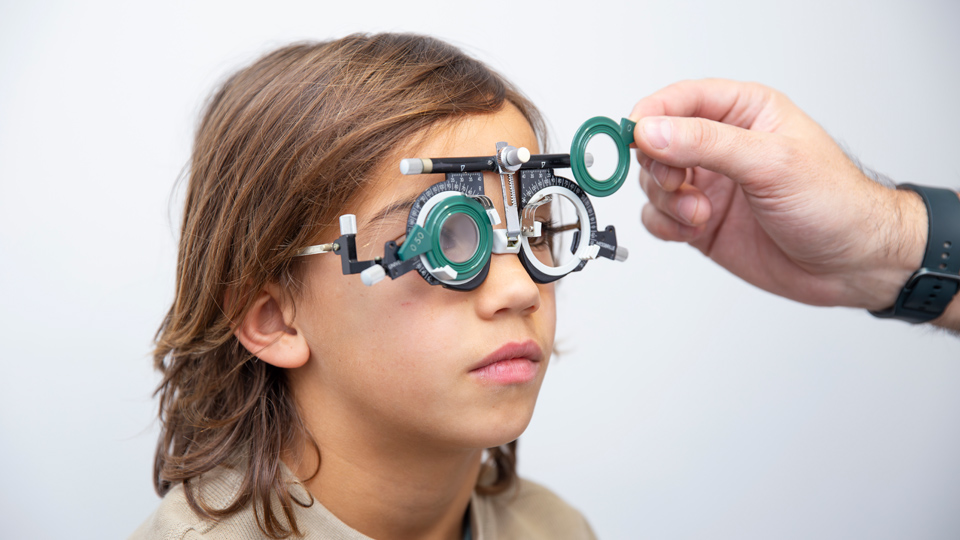Key aspects of visual development in childhood
13/11/2025

13/06/2025
Lazy eye, or amblyopia, is the most frequent cause of vision loss in children in developed countries. It is estimated to affect about 4% of school-age children—a significant percentage considering that it is a condition that is reversible in most cases with early diagnosis and treatment.
Lazy eye is a decrease in the visual ability of one or both eyes due to lack of use during the visual learning period. At birth, the sense of sight is not fully developed. Vision maturation requires a long learning process that begins at birth and ends around the age of 8 or 9, with the first 4 years being the most critical for plasticity and development. It is a condition that begins in childhood, but if it is not diagnosed and treated in time, it will persist into adulthood.
Any issue that causes poor vision in one or both eyes during this stage can lead to amblyopia. The main causes of lazy eye in children include:
In many cases, since the child can see well with one eye, there are no clear symptoms and the child functions normally, so amblyopia often goes undetected until a routine eye exam. However, there are signs and symptoms that may alert families, teachers, and caregivers to a possible visual problem:
If any of these signs are detected, it is very important to visit a specialized ophthalmologist to rule out ocular pathology.
The chance of recovery from lazy eye is high if it is diagnosed and treated before the age of 4. After that, the chances decrease progressively and are practically nonexistent after 9 or 10 years old. What we do not learn to see in early childhood cannot be recovered in adulthood. That’s why all children, even without symptoms, should undergo a complete eye exam by a specialist between the ages of 2 and 3.
The first step in treating amblyopia is identifying and correcting the cause. If there is a refractive error, it should be corrected with glasses or contact lenses. If there is a visual obstacle or organic cause (such as cataract or drooping eyelid), surgery may be needed to remove it. If the patient has strabismus, surgical treatment may sometimes be required.
Once the cause is addressed, we move on to treating the lazy eye. The most effective method to date, supported by scientific studies, is occlusion therapy—covering the healthy eye with a patch. The time and schedule for patching will vary depending on the degree of amblyopia, the cause, and the child’s age.
There are alternatives to patching, grouped under the term penalization, which involves causing blurred vision in the healthy eye. Penalization can be optical (by using an incorrect prescription or a filter in the healthy eye) or pharmacological (by applying a drop called Atropine, which dilates the pupil and blocks the focusing muscle in the healthy eye).
Detecting and treating lazy eye early is essential to avoid visual problems later in life. Failing to act in time can condemn a child to have lazy eye for life, which is why early diagnosis is vital. It’s never too early for a first eye check-up—though in some cases, it can be too late.
Dr. Idoia Rodríguez Maiztegui, ophthalmologist at the Barraquer Ophthalmology Centre
We chatted with our pediatric optometrist Susana Escalera, who sees about 30 children a day in her office. Her experience and skills are paramount to a successfult eye exam of these small patients, some of whom are still a baby. It seems like a simple task, but it is not.